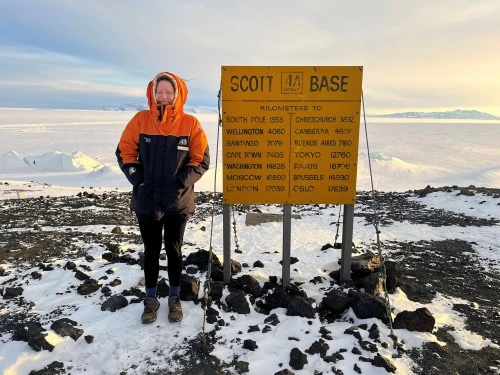In 1987, 13 solar powered cars designed by automobile manufacturers, universities, energy labs, and even a high school, gathered in Darwin at the start line of one of the world’s most epic races – a 3022km trek across Australia’s outback to Adelaide.
General Motors’ entry Sunraycer completed the journey in just over 44 hours to be crowned the winner of the inaugural World Solar Challenge, blazing a trail in an iconic event that is still going strong today.
Growing up in Darwin in Australia’s rugged, remote Northern Territory, Meridian Energy senior electrical engineer Clare Paynter was fascinated by the race that came town every two years.
Her family would head along to check out race cars that were remarkable feats of engineering, with Clare picturing herself behind the steering wheel.
That dream came to fruition in 2007 when Clare’s high school entered the race using a car donated by Northern Territory’s Charles Darwin University.
The vehicle wasn’t overly competitive – but that didn’t matter.
“We drove at 30 kilometres an hour for some parts of it, but we made it to the finish line!” recalls Clare, who as a teenager was already laser-focused on carving out a career in the renewable energy industry.
“How can you be exposed to that sort of thing and not want to go down that pathway?”
After high school, Clare studied systems engineering focussing on renewable energy (with an Arts degree majoring in political science on the side) at the Australian National University in Canberra.
She spent a summer vacation working for technology company ABB integrating renewables into diesel mini grids in remote outback locations, and interned in the sustainable energy section of Darwin’s utility company.
“The Northern Territory is a really remote place, and so renewables have made a lot of sense there for a really long time, as they have in other challenging parts of the world,” she says.
Clare credits the three years she spent in the graduate programme of Australian’s energy market operator AEMO with setting her on her ultimate career path.
“It was just the most amazingly organised programme. It forced you into different directions rather than letting you know what was good for you.
“And it was an incredibly tumultuous time in the Australian energy industry. There was a 12-month period where the whole of South Australia went black - like a massive blackout.
“Partly it was caused by storms, but also some really particular settings on wind farms had an impact and it really caught the industry by surprise.
“At the same time, the undersea power cable to Tasmania got cut. Tasmania almost ran out of hydropower and they had to start importing every diesel generator known to man and had diesel trucks circulating the state.
“Those two things happening in close succession, it was like, ‘wow, there is so much work to be done.”
